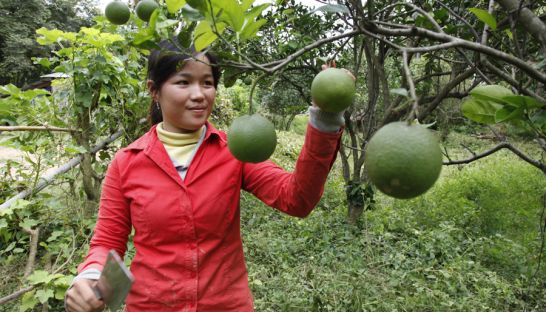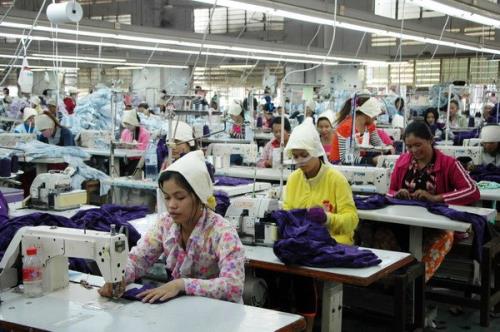GI benefits yet to be fully realised
GI benefits yet to be fully realised
While Kampot pepper and Kampong Speu palm sugar carry the brand-building Geographical Indication (GI) status, newcomers seeking the same tag continue to wait for funding to get their products off the ground.

In 2010, Kampot pepper and Kampong Speu palm sugar were the first Cambodian goods to obtain the World Trade Organization-backed GI status, an upgrade that links quality of a product to its origin, protects it under international law and creates brand recognition on the global stage.
Prices of GI-labelled products are often higher than those without the certification, according to sellers of the pepper and sugar, which weren’t the only items targeted for the new status.
Phnom Srok Silk of Banteay Meanchey province, Battambang milled rice, Svay Rieng province’s Smach milled rice, Kampot durian, Siem Reap prahok (fish paste], Kratie province grapefruits and oranges from Battambang were all on the list prioritised by the government.
They will have to wait for the privilege until funding is secured, said Op Rady, deputy director of the intellectual property department at the Ministry of Commerce.
“We don’t have any money from the government to support these projects,” he said, adding that the ministry of commerce was trying to look for avenues of funds.
After joining the WTO in 2003, the Cambodian government set out building the national framework needed for achieving GI status with support and about $1.3 million in aid from Agence Francaise de Developpement (AFD).
“GI was a way to help strengthen the traceability chain, and try to promote it on international markets and to protect it against fraud,” Florian Mugnier, project officer at the AFD, said.
The project – that ran from 2004 to 2009 – established the legal rules of protection as well as governance models between relevant ministries and industry associations for achieving GI status and ensuring its ongoing support.
Borne out of this pilot was the Kampot Pepper Promotion Association (KPPA) and the Kampong Speu Palm Sugar Promotion Association (KSPSPA). The majority of members are producers working with a handful of traders and marketers.
While not ruling out the potential of future funding for Cambodian products to reach the same standard, Mugnier said there were no plans in the budget to do so.
“An objective [of the project] was also that Cambodia could run this system by itself,” he said.
GI specifications that define the distinguishing features, production methods and agricultural conditions within a geographic area reassure customers of quality and allow them to trace the product from the shelves of the supermarket back to the palm trees and pepper plantations. The intention via the GI reputation is to expand export markets, with consumers willing to pay a higher price for a better product.
The same specifications are used to shut out imposters and ensure that newcomers meet standards before joining the GI circle. The endeavour has been a qualified success, but some industries on the waiting list may not be so keen to join the club.
Ke Mony, deputy secretary general of the Khmer Silk Village Association, which has about 700 members, cautioned that the government should not rush into a GI decision on Cambodian silk, as regional imbalances may occur.
“I think it is not necessary to register now because our production capacity is really low. If it gets registered, this means that the [government] will focus production capacity at the designated geographical area,” he said, adding he would like to see capacity enhanced evenly. Cambodia, he pointed out, still only produces one tonne of silk a year, while it imports more than 30 tonnes.
Of the two GI products, Kampong Speu palm sugar has not had a good run. Since achieving GI, sales have declined from 40 tonnes in 2010 to just 20 tonnes in 2012, according to the sugar promotion association.
Chan Sokha, an advisor to the group, has said that farmers are shying away from GI production in favour of less complicated methods with higher profit margins. Besides, customers aren’t savvy enough to know the difference, he said. “The price is higher than simple palm sugar and there are still few people who recognise its unique quality.”
For Kampot pepper, at least, the designation seems to have been a good investment.
According to figures from the Kampot Pepper Promotion Association, both price and output have been rising since the GI qualification. In 2008, just four tonnes of Kampot pepper was sold: black pepper at $4.5 a kilogram, red pepper at $8 per kilogram, and white pepper at $10 per kilogram. In 2013, 21 tonnes have been sold at $11 a kilo for black, $15 for red and $18 for white.
But, said Nguon Lay, president of the Kampot Pepper Promotion Association there is still not enough production to meet rising demand.
Mugnier, at AFD, said there is a long way to go in realising the benefits of GI in Cambodia, and that “with just two GIs, it is not easy to promote the concept” of it, adding that there that there are thousands of GIs in more developed economies.
The AFD is working with the UN’s Food and Agriculture Organization to strengthen the regional framework for GIs and support those already in place. According to the National Committee for Intellectual Property Rights, Laos, like Cambodia, has two, Vietnam has 20 and Thailand 30.
phnompenh post














